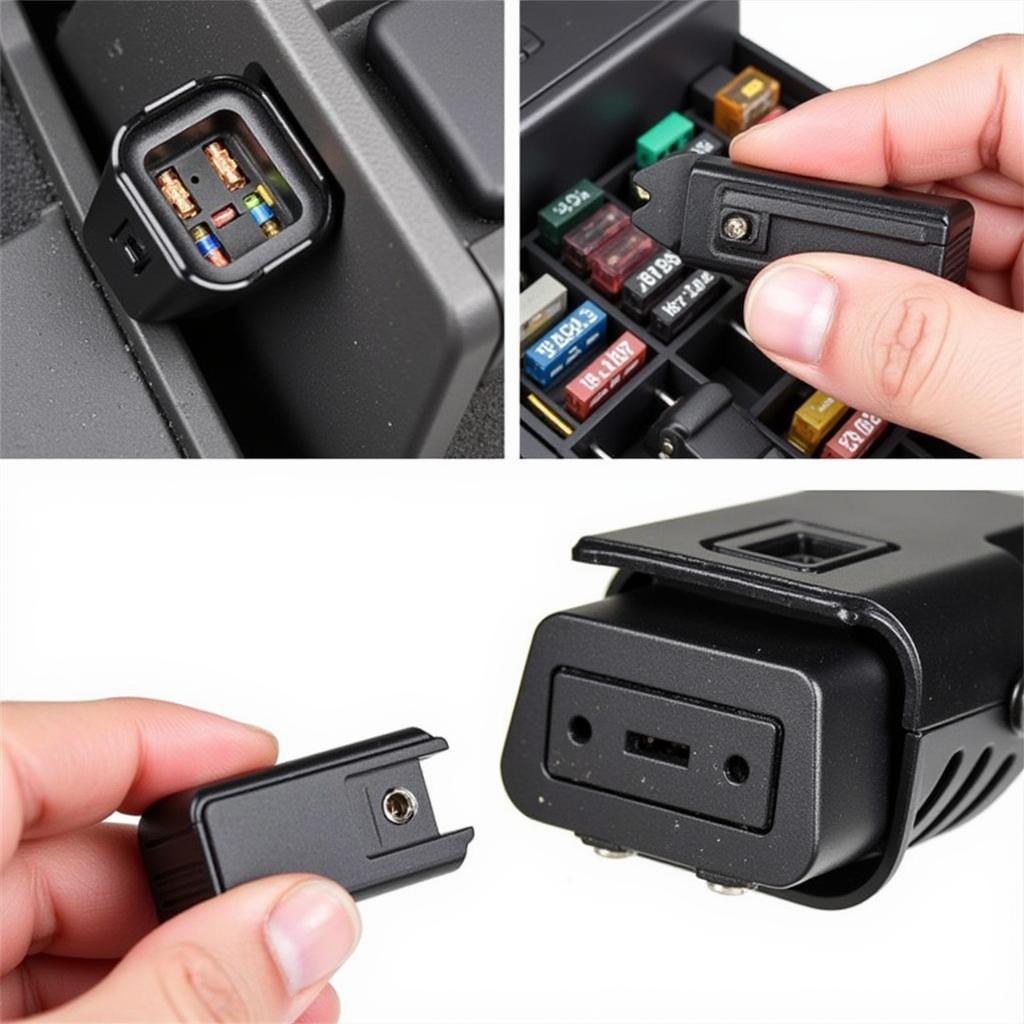Troubleshooting car scanner problems can be a real headache, whether you’re a seasoned mechanic or a car owner trying to understand that pesky check engine light. This guide will equip you with the knowledge and steps to effectively fix car scanner issues, saving you time and potentially costly repairs.
Understanding Your Car Scanner and its Quirks
Car scanners, also known as OBD-II scanners, are essential tools for diagnosing vehicle problems. They communicate with your car’s computer, retrieving diagnostic trouble codes (DTCs) that pinpoint the source of the issue. However, sometimes the problem lies not with your car, but with the scanner itself.
Common Car Scanner Problems and Solutions
-
Connectivity Issues: Perhaps the most frequent issue is trouble connecting the scanner to the car’s OBD-II port. Check the port for any physical damage or obstructions. Ensure the ignition is turned to the “on” position. If the problem persists, try a different OBD-II cable or scanner.
-
Inaccurate Readings: Another common problem is inaccurate or inconsistent readings. This could be due to a faulty scanner, a loose connection, or even interference from other electronic devices. Try disconnecting any nearby electronics and retesting. Consider updating your scanner’s firmware if available.
-
Software Glitches: Like any electronic device, car scanners can experience software glitches. Try restarting the scanner or, if possible, performing a factory reset. Ensure you are using the latest version of the scanner’s software.
Fix Car Scanner Communication Errors
Communication errors often stem from compatibility issues between the scanner and the vehicle’s computer system. Ensure your scanner supports the specific protocols used by your car’s make and model. Older vehicles might use different communication protocols than newer ones.
-
Check for Protocol Compatibility: Research your car’s OBD-II protocol and verify that your scanner supports it.
-
Update Your Scanner Software: Outdated scanner software can lead to communication problems. Updating to the latest version can often resolve these issues.
-
Inspect the OBD-II Cable: A damaged or faulty OBD-II cable can prevent proper communication. Check the cable for any visible damage or loose connections.
DIY Fix Car Scanner: Troubleshooting Tips
Before rushing to replace your car scanner, try these troubleshooting tips:
-
Power Cycle Everything: Turn off the car’s ignition, disconnect the scanner, and wait a few minutes. Reconnect the scanner and try again. This simple step can often resolve minor glitches.
-
Check the Fuse: The OBD-II port is usually connected to a fuse. Check your car’s fuse box to ensure the fuse isn’t blown.
-
Inspect the OBD-II Port: Look for any bent pins or debris within the OBD-II port. Carefully straighten any bent pins with a small tool.
 Checking the OBD-II Port Fuse
Checking the OBD-II Port Fuse
When to Seek Professional Help
If you’ve exhausted all troubleshooting options and your fix car scanner attempts are unsuccessful, it might be time to seek professional help. A qualified automotive technician can diagnose the problem and recommend the best course of action.
“A common mistake is assuming the scanner itself is faulty,” says John Smith, Lead Automotive Technician at Smith Auto Repair. “Often, the problem lies within the vehicle’s electrical system or the OBD-II port itself.”
Choosing the Right Car Scanner
Investing in a quality car scanner can save you money in the long run. Look for scanners that offer:
-
Wide Vehicle Compatibility: Ensure the scanner supports a wide range of vehicle makes and models, including your own.
-
Regular Updates: Choose a scanner from a reputable manufacturer that provides regular software updates.
-
User-Friendly Interface: A clear and intuitive interface will make using the scanner easier and more efficient.
Conclusion
Fixing car scanner issues can range from simple troubleshooting steps to more complex repairs. By following the guidance in this article, you can effectively troubleshoot and fix car scanner problems, ensuring you have the right tools to keep your vehicle running smoothly. Remember, a properly functioning car scanner is crucial for accurate diagnostics and efficient repairs. For further assistance or personalized advice, don’t hesitate to connect with the experts at AutoTipPro. Call us at +1 (641) 206-8880 or visit our office at 500 N St Mary’s St, San Antonio, TX 78205, United States.
“Regularly updating your scanner’s software is crucial for maintaining compatibility and accuracy,” advises Jane Doe, Senior Diagnostic Specialist at Doe Automotive Diagnostics.
FAQ
-
Why is my car scanner not connecting? Check the OBD-II port connection, ignition status, and cable integrity.
-
What does a flashing check engine light mean? A flashing check engine light indicates a serious problem requiring immediate attention.
-
How do I update my car scanner’s software? Consult your scanner’s user manual or the manufacturer’s website for instructions.
-
Can I fix a broken OBD-II port myself? While minor repairs are possible, it’s generally recommended to seek professional help for OBD-II port issues.
-
What are the most common car scanner errors? Connectivity issues, inaccurate readings, and software glitches are common car scanner problems.
-
How do I choose the right car scanner? Consider vehicle compatibility, update frequency, and user interface when choosing a car scanner.
-
What should I do if my car scanner still doesn’t work after troubleshooting? Seek professional help from a qualified automotive technician.




Leave a Reply